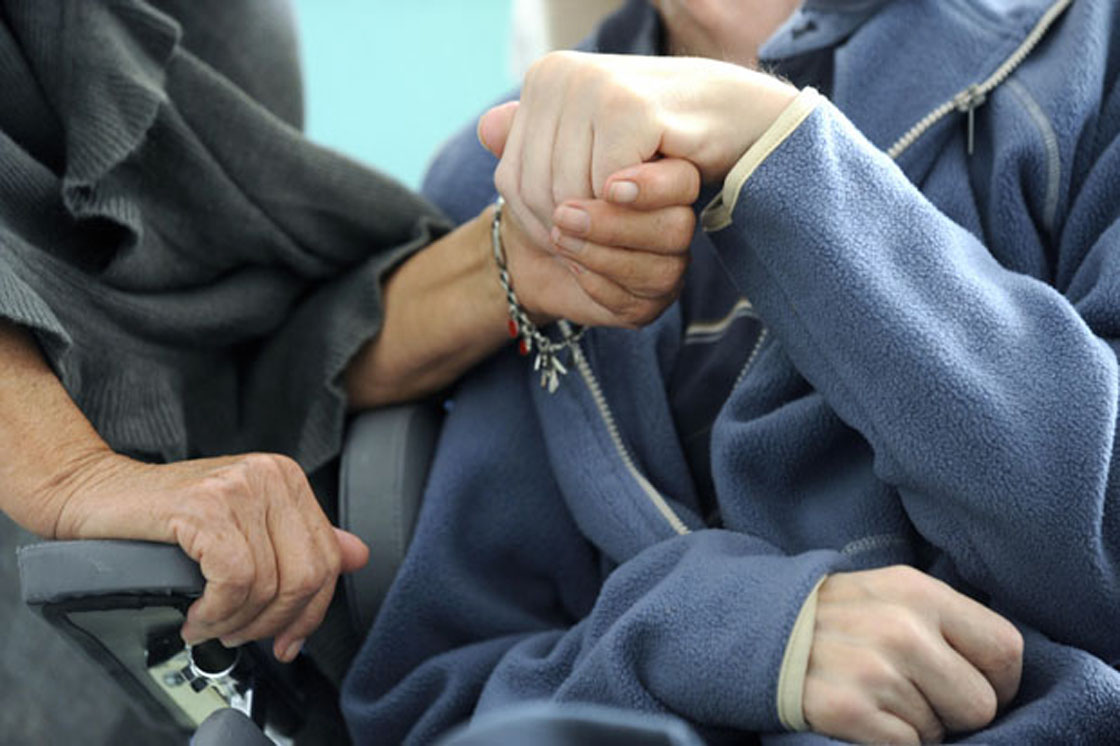TORONTO — Millie Graham is the quintessential grandma. She bakes pies and cooks dinner, spends time with her six grandkids and has even been on a cruise to Alaska.

But she’s also an anomaly: after a major stroke, for the past 21 years Graham hasn’t been able to use the left side of her body from her face, right down to her toes.
The busy Parry Sound, Ont. woman was a mom of three kids and the director of administration for the town. On a lazy Sunday in August 1992, Graham was lying on the couch just after 4 p.m. She was 44 years old.
That’s when she felt a piercing pain shoot up the back of her neck, the ceiling began to spin and she couldn’t scream for help to her husband. She says she was instantly paralyzed.
“They always talk about when something tragic happens, you feel this sense of gloom and doom, and I felt that rush over me,” she told Global News.
Graham had suffered a massive cerebral hemorrhage, a stroke that changed her family’s life.
Recovery from stroke misunderstood by some Canadians
Some Canadians seem to misunderstand what’s involved in the recovery process for people who’ve had a stroke, a new national report says.
- Life in the forest: How Stanley Park’s longest resident survived a changing landscape
- Bird flu risk to humans an ‘enormous concern,’ WHO says. Here’s what to know
- Mental health support still lacking 4 years after mass shooting: Nova Scotia mayor
- Buzz kill? Gen Z less interested in coffee than older Canadians, survey shows
While stroke survivors deal with a lifetime of recovery, the Heart and Stroke Foundation says its latest poll shows one in three Canadians believe that the rehabilitation process is only a few months. After that, these respondents think that stroke patients won’t recover any further.
Graham is living proof that this isn’t true: following her stroke, she took on months of rehabilitation in hospital. Her daughter’s October wedding was only months away – she told Global News she promised herself that she wouldn’t rely on a wheelchair to walk down the aisle.
Graham with her daughter just months after her stroke. (Photo courtesy Millie Graham)
By Christmas that same year, she was able to walk with the help of a cane. Now, two decades later, Graham has relearned to walk with the help of a cane, brace and splint on her left leg, talk, paint, author books about stroke recovery and she’s even travelled the world with her husband.
Read more: Canadian study could lead to better detection, treatment of stroke risk worldwide
Another one in five Canadians say that stroke is almost always fatal, which also isn’t the case.
Even then, another group — about 20 per cent of Canadians — says it has helped in the care and support of a stroke survivor.
“Our poll confirmed what we have long suspected — that stroke touches the lives of many Canadians and family members and friends play an important role in the recovery process,” the national charity’s report, released Monday morning, said.
Read more: Canadians living longer, but managing heart health needs improvement
About 315,000 Canadians are living with the effects of stroke and an estimated 50,000 strokes occur each year.
Caregivers’ involvement in stroke recovery
Following a stroke, life changes dramatically for a family. Stroke is a leading cause of disability in North America. Half of stroke victims experience paralysis on one side of their bodies, 30 per cent can’t walk and another 19 per cent have speech problems.
It’s an incredibly challenging time for the stroke victim and their families left to pick up the pieces of their previous life. The report hopes to emphasize the role caregivers play in helping stroke survivors.
Read more: Stroke patients’ health outcomes influenced by spouse’s optimism
There’s an estimated four to five million Canadians providing care for a family member with long-term health problems. Those patients who suffer mild stroke wouldn’t be able to leave hospital without having a spouse or family member look after them.
They help with exercises, dressing, using the washroom, driving or coordinating with doctors.
Graham took on months of rehabilitation following her stroke. (Photo courtesy Millie Graham)
Graham says her husband Doug walked a “parallel path” alongside her during her recovery. He left his job in social work during the first few months following Graham’s stroke. To this day, he still helps to dress her, put on her jewelry and get ready.
Read more: 5 lifestyle changes to improve your heart’s health
Months into her rehabilitation, Graham realized she wouldn’t get the left side of her body back. That left her in depression that she had to work her way out of.
Now, Graham says she hopes her story offers some inspiration to other stroke survivors.
“Life isn’t easy for me now. I still struggle with a lot of things, but I’ve learned to cope,” she told Global News.
“I want the world to know that your life doesn’t have to be over after stroke.”
Read the Heart and Stroke Foundation’s full report here.
carmen.chai@globalnews.ca
Follow @Carmen_Chai






Comments